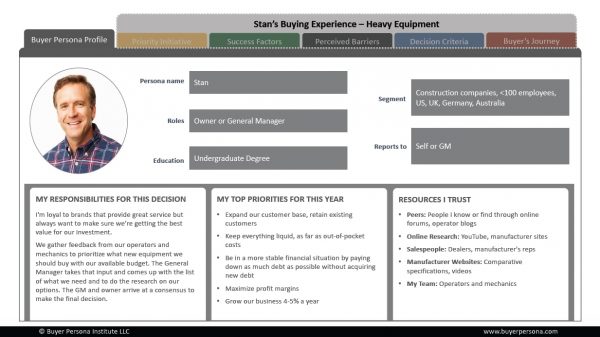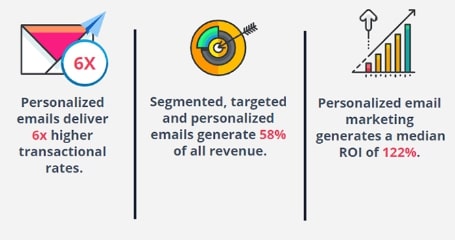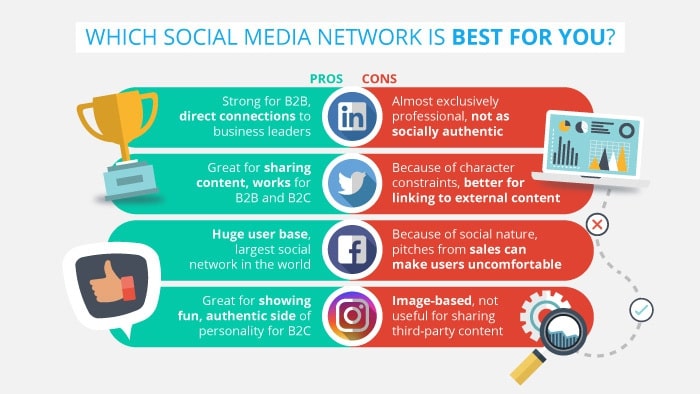Updated on January 24, 2022
Selling is a tough job, and in today’s age of fierce competition, it gets even tougher. Selling in the B2B sector has its own additional challenges stemming from the specifics of business processes. Long sales cycles, overwhelming volumes of data, complex decision-making processes – these are just the most prominent B2B sales challenges that you might need to deal with.
However, even with the wide variety of business customers in multiple industries, it is still possible to identify certain common trends and patterns. They allow us to work out ways to overcome the most common challenges in B2B sales and bring you more customers.
Most frequent B2B sales challenges
If you are searching for ways to tackle your biggest B2B sales problems, you can start by looking into their reasons. They might suggest the most optimal ways of handling B2B sales interactions to achieve success.
Generating qualified leads
A qualified lead is a lead that can potentially become a customer. Unfortunately, not all leads generated by your marketing and sales outreach activities are qualified – some are not ready to purchase, for others, the offering is not right. In order to make your B2B sales process more efficient, you need to focus on getting qualified leads.
Generating qualified leads is not an easy process – in fact, 61% of sales executives name lead qualification their biggest challenge. Luckily, there are techniques that you can use to increase the share of qualified B2B leads in your lead generation process.
Define your buyer persona
Defining the right buyer persona is the first step to improving your lead generation strategy. Your buyer persona represents your perfect customer, the one who will definitely buy from you. Try to think who they might be in as much detail as possible – their profession, age, social group, average income, etc. Give them a name, education, professional and family background. See how the Buyer Persona Institute does it and try to imagine your specific buyer persona in a similar way.

Try new content marketing techniques
Content marketing, when done right and aligned with the sales objectives, can influence lead generation dramatically. 72% of marketers admit that content marketing helped them to increase the number of leads. If you are trying to reel in more qualified leads, try to see which content they prefer. You can start by analyzing what your prospects search for online and then adapt your content accordingly. For example, you can try new keywords, formats, or images to attract new leads.
Leverage email outreach opportunities
In the B2B sector, email outreach ranks third by the influence on the target audience. Use this trust to your advantage to create a smart and effective email marketing campaign.
Gather email addresses from your website visitors by offering them attractive rewards – a free downloadable piece of content or a free trial of your product. Of course, the content you offer in exchange for a subscription should be of real value to your prospects. Once you have them signed up, follow up with more engaging and educational content to maintain healthy and trusting relationships.
Standing out from among your competitors
Persuading customers that they should accept your offer rather than your competitor’s is another great challenge. In B2B, it is even greater, as businesses tend to do massive research before they even start communicating with you and never make impulse decisions. What can you do to stand out?
Analyze the competition
Start with researching the market and identifying your competitors. Compare their offering to yours and find the differences. This research will help you understand what your competitors place in the spotlight and what, on the contrary, they try to put out of sight. At the same time, once you identify your competitors’ strengths, you can see what to do to become better.
Identify common problems your prospects seek to solve
Remember the buyer persona? It can suggest the common pain points of your potential customers that they want to resolve with your – or your competitor’s – product. See how you address these pain points and compare your solutions with those of your competitors. This analysis will help you determine whether your product represents true value for customers as compared to other brands’ products.
Shape your unique selling proposition
Based on the competition analysis, you can single out the unique advantage that your product has, which makes it different from the competition. This advantage – a feature, a convenient pricing plan, a flexible refund policy – should become the focal point of your product offering. Even if your offering is not exactly unique but is better than what other brands have, you can still play it smart to make customers recognize its real value.
Getting the attention of prospects
Finding your qualified lead is not enough. You need to get on their radar to even begin hoping for a sale. Here, you need persistence and determination, as B2B decision-makers are busy people who need to be reminded, often more than once. Even if you had a meeting with your prospect, in 80% of cases, it may take as many as five follow-up calls to make a sale.
Use personalized approach in sales
Personalization works in B2B selling, too. When drafting your emails to prospects, place them in your focus and address their specific needs and requirements. If your email does not strike a single chord in the recipient, it will go straight to the trash bin. With a personalized approach, however, your transactional rate may be six times higher.

Call customers by their names, refer to their geographic locations, synchronize with their time zones – you know what to do. If you think this is too much, think again – hyper-personalization is becoming a new normal.
Appeal to specific pain points
In your prospecting emails, highlight the ways your product resolves your customer’s problems. Study your prospect’s background to see how your product fits into their lives and which particular needs it meets. This way, the recipient will sense that you understand their requirements and pay more attention to your communications.
Increase your social presence
Don’t ignore social selling in your B2B campaigns. Statistically, B2C businesses exploit social media better than those in the B2B sector, but you can use this fact to your advantage.
Leverage your social presence to connect with your prospects and share useful content. LinkedIn and Twitter are known to be used the most frequently for B2B contacts. For example, Twitter is the media of choice for 72% of B2B marketing companies.

The key thing is to find the right balance between promotional and educational content so that you showcase your product without being overly sales-y. This way, you will keep your subscribers and followers engaged and can eventually convert them to customers.
Overcoming the long decision-making cycle
Long sales cycles are one of the biggest B2B sales challenges. This phenomenon comes from the very nature of B2B commerce, where corporate purchase decisions require thorough analysis, are subject to various procedural regulations, and are often made by groups of people.
Use efficient CRM tools
How can a CRM tool help you overcome the long sales cycle problem? A CRM system stores all your customers’ data including the entire history of communication. Each sales call, email, offline meeting is logged in your CRM system together with the minutes and follow-up action points. With such a system, you can plan and schedule your customer contacts better and thus keep their attention.
Document your sales activities
Use your CRM tool to document and analyze your sales cycle. With all customer contacts recorded, you can see the patterns and compare them with the data available. This way, you will understand if you are doing better or worse and if any improvements are in order. It may even turn out that your situation is not as bad as it seemed.
Logging your sales process can also help you identify any bottlenecks that repeat from customer to customer. Use this knowledge to improve your sales flow.
Provide decision-boosting content aligned to the buyer journey
Your buyer’s journey continues from initial introduction to your product through evaluation to purchase. Follow this journey step for step with content that is the most effective at each stage.
At the introductory stage, offer ebooks, video overviews, and white papers. Once you grab their attention, proceed with case studies and webinars. After that, follow with a personalized demo or a free trial. This type of a sales content strategy will increase customers’ confidence and boost their purchase decision.
Retaining customers
Closing the sale does not mean that your work with a customer is over. In fact, it is just the beginning. In B2B, customer lifecycles are even longer than in B2C, as the products and services are used for a long time. It is your job to retain the customer during that time to ensure that they repeat their purchase.
Use follow-up techniques
Leverage the features of your CRM tool to schedule your customer contacts after the sale. This way, you will not lose sight of any customer, as the system will remind you of an upcoming call or a meeting. Ask them about their experience with your product, offer support or additional services. During such communications, pay special attention to any complaints and do all you can to resolve them quickly.
Maintain contact with account managers
Account managers usually possess lots of valuable insights into the way customers use your product. For example, they can give you data on how regularly and how intensively your software is used.
If the usage is consistently at a high level, you can assume that the customer is happy with the purchase and likely to return. If, on the other hand, the usage is scarce and irregular, something is definitely wrong. Reach out to the customer to find out why they are not successful.
Provide excellent customer service and support
Customer retention is highly determined by the quality of service and support. Your goal is to help the customer to achieve success with your product, and the support team plays a major role in this process. They are the ones who help customers get started with you, and they should be there when customers need assistance. This is why it is critical to improve your team’s customer service skills and aim for providing the best support possible.
Measuring ROI
In sales, determining the activities that lead to success is another challenge. It takes a lot of effort to establish a system of accounting and measuring the ROI of each sales task from the very beginning of the process.
Determine your goals and KPIs
Set measurable goals. As the saying goes, “If you can’t measure it, you can’t manage it”. You should be able to evaluate the effectiveness of each of your sales activities through your KPIs, such as the number of new qualified leads, the number of website visits, the time spent on page, and so on. Such KPIs will help you see which sales and marketing efforts perform well and which need revision.
Monitor activities that lead to sales
Pay special attention to the activities that resulted in a sale. It can be a video call, a personal demo, or a special offer that pushed the customer to make a decision to purchase from you. Note all such activities to analyze them and identify trends.
Of course, there may be a combination of factors that led to a sale – great content, excellent work of your sales agent, and, of course, the superb quality of your product – but, in any case, such monitoring can highlight both strengths and weaknesses of your marketing efforts.
Analyze customer feedback
There is a very simple way to find out what caused the customer to buy – ask them. Usually, they will be happy to tell you what tipped the scales in their case. Use this information to fine-tune your sales and marketing strategies and take advantage of the techniques that proved to be the most successful.
Are you ready to face your B2B sales challenges?
Let’s say it again – B2B selling is a tough job. We hope this article has given you a couple of action points to implement in your sales processes. Try these techniques and do not be afraid to experiment, adjust, and even start over – and you will see your sales results improve.
Courtesy of:
 Julia Serdiuk is an outreach specialist at HelpCrunch, an innovative platform to build relationships with customers. She is a seasoned traveler and yoga enthusiast who appreciates life and believes in the cloudless future of our planet.
Julia Serdiuk is an outreach specialist at HelpCrunch, an innovative platform to build relationships with customers. She is a seasoned traveler and yoga enthusiast who appreciates life and believes in the cloudless future of our planet.


